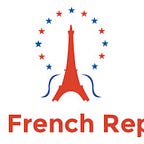An historical first round
The First Round of the French presidential election has just passed. As predicted, the results were pretty tight and excluded the two traditional parties for the first time in the Fifth Republic. Contrary to Brexit or the American Election, the Big Data was wrong and the polls had their “revenge”.
The voting turnout was lower than the previous presidential election
On the 21st of April 2012, 79.48% of the French people went to vote for the first round of the presidential election. This year, 77.77% went to vote.
This decrease can be due to the dissatisfaction concerning the candidates running for the presidency. Indeed, just less than a quarter of the French people decided to abstain. That represents more than 10 million French people.
Among the ones who voted, more than 650,000 (1.39%) gave a blank vote and approximately 285,000 (0.60%) were null.
Today, the blank vote is not recognised and therefore not taken into account when the results are announced. Some candidates such as Jean-Luc Mélenchon, François Asselineau, Nicolas Dupont-Aignan, Jacques Cheminade and Benoît Hamon wanted to recognise the blank vote. They want to assimilate the choice of voters who did not want to vote for any candidate. Recognising the blank votes could:
- Prevent a candidate from attaining an absolute majority
- Invalidate an election if the blank votes and the abstention combined represented more than 50%.
This would redefine the election rules as we know them today.
Candidates: the traditional right and left parties out of the game
The final results meant that Macron and Le Pen qualified for the second round of the presidential election. The En Marche! candidate (24.01%) has more than a 2.5% lead over the far-right leader (21.30%).’
It is the first time in the Fifth Republic that none of the traditional parties will be represented in the second round. However, François Fillon and his party Les Républicains were really close to the second place with 20.01% of the votes. The Socialist Party represented by Benoît Hamon suffered an historic defeat with 6.36% of votes.
Conversely, the leader of La France Insoumise, Jean-Luc Mélenchon, managed to get 19.58% of the votes. He received 11.10% of the votes in 2012. This increase reveals a bigger appeal for the far-right program, mainly among young voters.
Among the “smaller candidates”, Nicolas Dupont-Aignan received 4.70% of the votes. He nearly reached the limit of 5% that would allow him to receive a little more than eight million euros from the State to reimburse his campaign (see explanation below). Therefore, as he spent quite a lot of money to reach more voters (he got 1.79% in 2012), he is now appealing for private donations to fund the rest of his campaign.
After him, we find Jean Lassalle who gathered 1.21% of the votes: that is more than 400,000 votes. This is nearly one more percent than what the polls were predicting. Philippe Poutou received 1.09% (1.15% in 2012), François Asselineau 0.92%, Nathalie Arthaud 0.64% (0.56% in 2012) and Jacques Cheminade 0.18% (0.25% in 2012).
We can see a real cut between Western France who voted more for Macron and Eastern France who was more inclined to vote for Le Pen.
Compare to 2012, Le Pen reinforced her influence in the South-Est and North of France.
Why is the 5% limit so important?
At the end of the voting, the State grants fixed reimbursements according to the results of each candidate:
- The candidates who received 5% or less of the vote cast receive a maximum of 4,75% of the amount of the election spending limit, so that is 800 423 euros.
- The ones who gather more than 5% can receive 10 times more money: 47,5% of the amount of the election spending limit, so that is 8 004 225 euros.
- For the two finalists, they receive up to 10 691 775 euros.
This issue is really important for candidates such as Nicolas Dupont-Aignan as we have explained earlier.
The conditions to be eligible for these reimbursements are:
- Send your campaign account to the National Commission for Campaign Accounts and Political Financing (CNCCFP in French) before the 7th of July 2017.
- Do not exceed the imposed spending limit (16,9 million for the first round, 22,5 million for both rounds).
- Do not have your campaign account rejected for another reason.
Data sources
Presidential Elections 2017: http://elections.interieur.gouv.fr/presidentielle-2017/FE.html
Presidential Elections 2012: http://www.france-politique.fr/election-presidentielle-2012.htm
